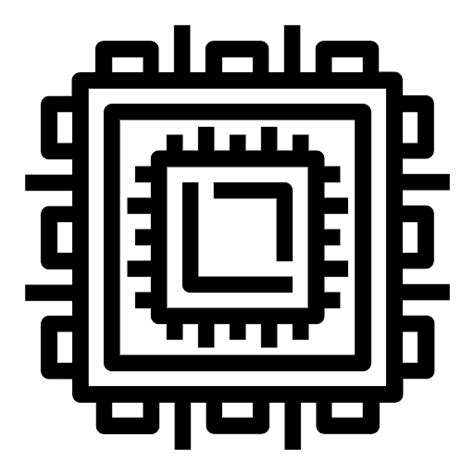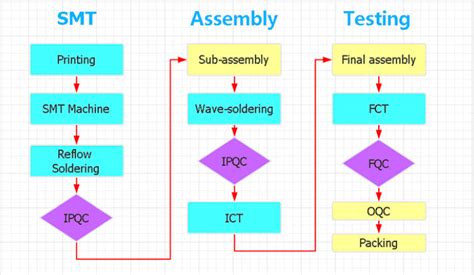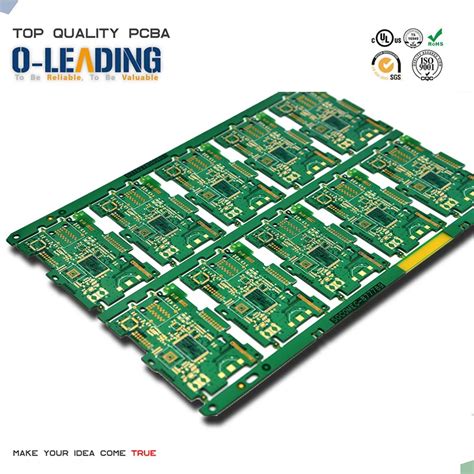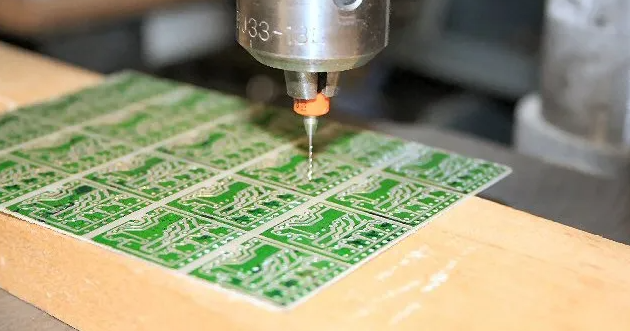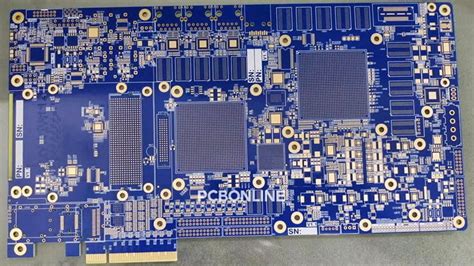Unlocking Efficiency: The Power of Consigned PCB Assembly
Key Takeaways
In the realm of PCB assembly, the consigned PCB assembly model has emerged as a transformative approach for manufacturers aiming to enhance operational efficiency. This method allows companies to take greater control over their parts supply, effectively streamlining the production process. One of the most significant advantages is the reduction in lead times; by managing more of their components internally, manufacturers can respond swiftly to changes in demand and minimize delays often associated with traditional sourcing methods. Furthermore, adopting this innovative strategy not only facilitates cost savings by eliminating excess inventory but also promotes a high level of collaboration among teams. As stakeholders work closely together, sharing insights and requirements becomes more seamless, ultimately resulting in a more agile manufacturing environment. Companies implementing pcba practices can thus expect not only enhanced production workflows but also stronger team dynamics and improved quality control. In summary, harnessing the capabilities of consigned PCB assembly positions manufacturers advantageously within their respective industries, paving the way for future growth and innovation.
Introduction to Consigned PCB Assembly
Consigned PCB assembly, often abbreviated as PCBA, marks a transformative approach in the realm of electronics manufacturing. In this model, the manufacturer receives materials from the customer, which significantly shifts the dynamics of production. This method not only brings efficiency to the assembly process but also allows for a more streamlined and collaborative relationship between the manufacturer and their clients. By leveraging existing resources more effectively, consigned PCB assembly enables a reduction in lead times and enhances the flexibility needed to address fluctuating market demands. The strategic allocation of components ensures that manufacturers can respond promptly to changes, keeping projects on schedule and within budget. Furthermore, with a focus on quality control at each stage of production, businesses engaging in this model can maintain high standards while potentially lowering overall production costs. As industries look for ways to innovate and remain competitive, PCBA using consigned materials offers a compelling solution that aligns with both efficiency and collaboration objectives in manufacturing processes.
Key Benefits of Consigned PCB Assembly
Consigned PCB Assembly is rapidly gaining traction in the manufacturing landscape, offering a variety of benefits that can significantly enhance operational efficiency. One of the primary advantages is the potential for cost savings. By allowing companies to supply their own components, pcba processes can be streamlined, resulting in reduced material waste and lower procurement costs. Additionally, this method fosters greater flexibility in inventory management, as businesses can adjust their component supply based on immediate production needs rather than relying on fixed suppliers.
Furthermore, the approach encourages collaborative partnerships between manufacturers and suppliers. Such collaboration not only builds trust but also enables better communication regarding quality standards and production timelines. The result is an optimized production cycle where issues are addressed promptly, leading to a higher quality output in the PCBA process. Another significant benefit is speed-to-market. With greater control over component sourcing and assembly scheduling, companies can quickly react to market demands and launch products faster than competitors who rely on traditional assembly methods. Overall, the strategic implementation of consigned PCB assembly practices leads to improved efficiency, reduced costs, and heightened collaborative efforts throughout the manufacturing process.
Cost Reduction Strategies Through Consigned PCB Assembly
Consigned PCB assembly has emerged as a pivotal strategy for manufacturers seeking to achieve significant cost reductions. By allowing clients to supply their own components while the assembly service provider focuses on the skilled labor and production processes, this method streamlines operations and cuts unnecessary expenses. Implementing a consigned PCBA model means that manufacturers can mitigate costly inventory management issues. For instance, by purchasing components directly, companies can often negotiate better rates or leverage bulk purchasing. Moreover, reduced wastage occurs because clients can ensure that only the necessary parts are available, avoiding excess inventory that could lead to obsolescence.
“Collaboration with suppliers is fundamental; it enables a smoother process in selecting reliable components and securing competitive pricing.”
Overall, the focus on cost-effective solutions within consigned PCB assembly not only optimizes resource allocation but also enhances the overall production efficiency by aligning financial focus with strategic planning. This dual emphasis on financial prudence and operational efficacy reinforces why organizations are increasingly considering consigned models in their PCBA strategies.
Enhancing Collaboration in Manufacturing with Consigned PCB Assembly
Consigned PCB assembly represents a transformative approach in the manufacturing sector, significantly enhancing collaboration among stakeholders. By enabling manufacturers to source their own components while partnering with assembly service providers, this model promotes a shared responsibility for quality and timelines. This symbiotic relationship allows teams to engage directly in the production process, facilitating real-time feedback and adjustments that drive efficiency. With PCBA practices tailored to the specific needs of a project, companies can reduce lead times and foster a culture of cooperation that directly impacts product innovation. The transparent communication channels established through consigned PCB assembly ensure that any potential issues are addressed promptly, aligning all parties towards common goals. Ultimately, this collaborative framework not only empowers individual teams but also optimizes the overall production workflow, making it an essential strategy for companies aiming to stay competitive in an evolving market.
Case Studies: Success Stories of Consigned PCB Assembly
The implementation of consigned PCB assembly has demonstrated remarkable success across various industries. One notable case involved a leading electronics manufacturer that faced production delays and escalating costs. By leveraging a pcba model, they were able to stock components in advance, significantly speeding up the manufacturing process. This shift not only minimized lead times but also reduced the overhead associated with storage and logistics. Another inspiring example comes from the automotive sector, where collaboration with suppliers through consigned pcb assembly resulted in improved product quality. By fostering closer ties and communication with component providers, the manufacturer was able to integrate real-time feedback into their development processes, ultimately enhancing the reliability of their products. These cases highlight how pcba practices streamline operations and create synergy between stakeholders, paving the way for innovation and market competitiveness. The strategic advantages gained from adopting a consigned PCB assembly approach illustrate its potential to transform traditional manufacturing practices into agile, responsive systems that meet the demands of today’s fast-paced market environment.
Overcoming Challenges in Consigned PCB Assembly Implementation
Implementing consigned PCB assembly can present various challenges that organizations must navigate to harness its full potential. One of the primary hurdles is ensuring quality control. Since PCB assembly involves multiple stakeholders, maintaining consistent quality across all components can be difficult. Companies must establish rigorous inspection protocols to mitigate this risk. Additionally, managing the supply chain effectively is crucial; delays from suppliers can hinder production schedules, impacting overall efficiency.
Another challenge is the need for clear communication among teams. Misalignment between engineering, procurement, and manufacturing departments may lead to errors or misinterpretations, which could compromise the success of the PCBA process. Establishing collaboration platforms and regular meetings can help bridge these gaps.
Finally, realigning existing workflows to accommodate a consigned approach may require training and adaptation from all team members. Organizations need to prioritize employee education on new procedures and technologies to foster a smooth transition.
| Challenge | Description | Solution |
|---|---|---|
| Quality Control | Inconsistent quality of components | Implement rigorous inspection protocols |
| Supply Chain Management | Potential delays from suppliers | Develop contingency plans for sourcing |
| Communication Issues | Misalignment between departments | Establish regular communication channels |
| Workflow Realignment | Need for new training on updated processes | Invest in workforce training and development |
Overcoming these challenges not only helps in successfully implementing consigned PCB assembly, but it also enhances production efficiency and fosters a culture of collaboration within the organization.
Future Trends in PCB Assembly Practices
The landscape of PCB assembly is continuously evolving, driven by emerging technologies and market demands. As industries require faster production cycles and greater customization, consigned PCB assembly practices increasingly play a pivotal role. With the rise of automation and artificial intelligence, companies are streamlining their manufacturing processes to enhance efficiency and reduce lead times. The integration of smart technologies into the PCBA process allows for real-time monitoring and adjustments, which not only improves quality control but also minimizes waste. Another trend reshaping the future is the growing emphasis on sustainability; manufacturers are adopting eco-friendly materials and practices to meet regulatory standards and consumer expectations alike. Additionally, as collaborative production models gain traction, there’s a significant shift towards sharing resources among stakeholders in the supply chain, fostering innovation and facilitating scalability. The adoption of consigned PCB assembly is anticipated to rise as companies recognize its strategic advantage in cultivating partnerships that leverage collective expertise for enhanced performance in today’s competitive market landscape.
Conclusion: The Strategic Advantage of Consigned PCB Assembly
In today’s competitive landscape, consigned PCB assembly (PCBA) emerges as a transformative approach that offers significant strategic advantages. This method allows manufacturers to take greater control over components through an efficient and collaborative model. By utilizing consigned PCBA, organizations can optimize their supply chain management, streamline production processes, and minimize lead times. The cost reduction associated with reduced inventory holding expenses and decreased waste is another powerful incentive for adopting this innovative practice. Moreover, fostering deeper collaboration between suppliers and manufacturers enhances communication, leading to quicker problem-solving and a more agile production environment. Overall, implementing a consistent strategy around consigned PCB assembly empowers businesses to respond adeptly to market demands while maintaining high-quality standards in their product development. As industries continue to evolve, embracing the benefits of consigned PCBA will likely become a pivotal factor in sustaining competitive advantage and operational efficiency.
Conclusion: The Strategic Advantage of Consigned PCB Assembly
In summary, consigned PCB assembly represents a transformative approach within the manufacturing sector, offering numerous advantages that contribute to overall efficiency. By leveraging a model that allows manufacturers to supply the necessary components, businesses can reduce costs associated with inventory management and streamline the production process. This enables a more effective allocation of resources and enhances the flexibility of operations. Additionally, the collaborative nature of PCBA fosters stronger partnerships between manufacturers and suppliers, ensuring a shared commitment to quality and timely delivery. As industries increasingly adopt this strategic model, they can expect not only to improve their operational efficiency but also to position themselves effectively in a competitive market landscape. The integration of consigned PCB assembly methods signals a proactive shift towards sustainability and innovation in production practices.
FAQs
What is consigned PCB assembly?
Consigned PCB assembly is a manufacturing approach where the customer provides their own components for the assembly process. This allows companies to have greater control over their materials and costs.
How does consigned PCB assembly reduce costs?
By sourcing their own components, companies can often negotiate better pricing or choose higher-quality parts, resulting in significant cost savings in the overall PCBA process.
What are the benefits of adopting consigned PCB assembly?
This model enhances flexibility and responsiveness in production. It allows for customization, quick adjustments to designs, and better inventory management, all of which contribute to improving overall production efficiency.
How does consigned PCB assembly foster collaboration?
When customers are directly involved by providing components, it encourages a closer partnership between manufacturers and clients. This collaboration can lead to improved communication and innovation in the PCB assembly process.
Are there challenges with consigned PCB assembly?
Yes, managing supplier relationships and ensuring quality control of provided components can pose challenges. However, with proper planning and strategies in place, these issues can be effectively addressed.

